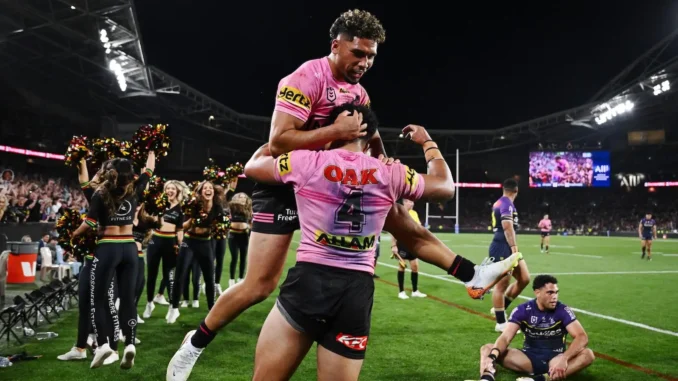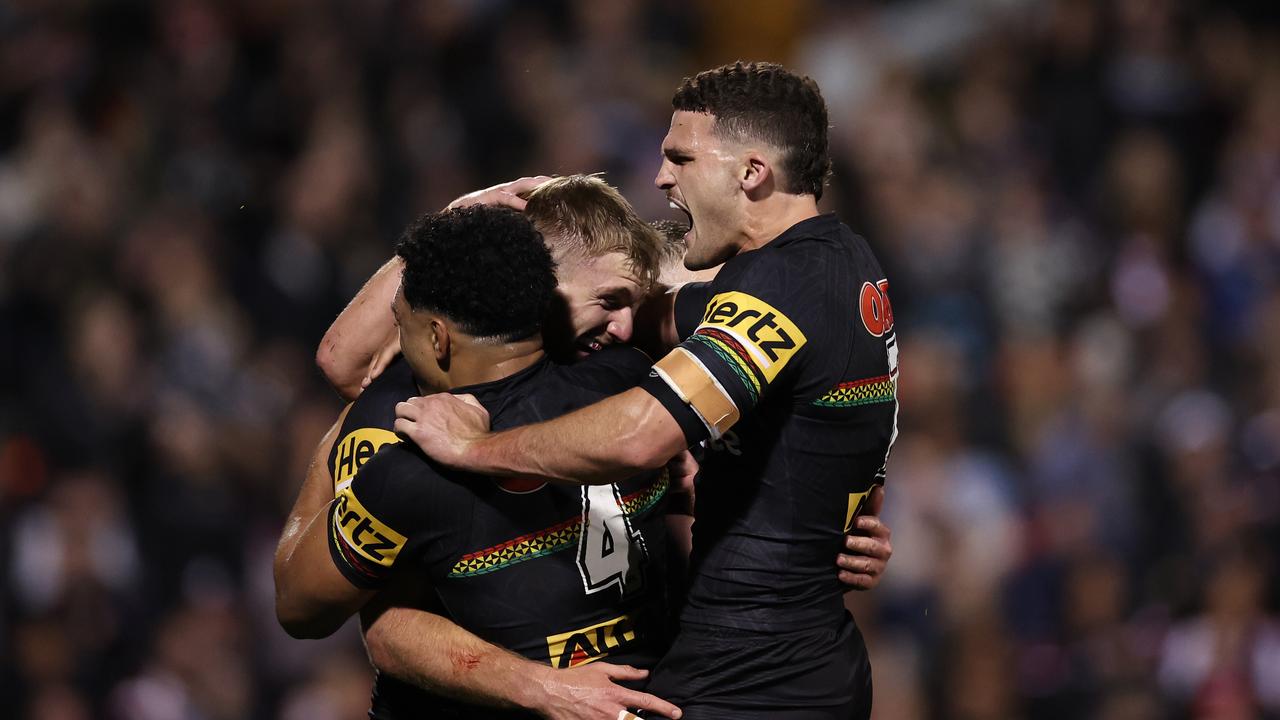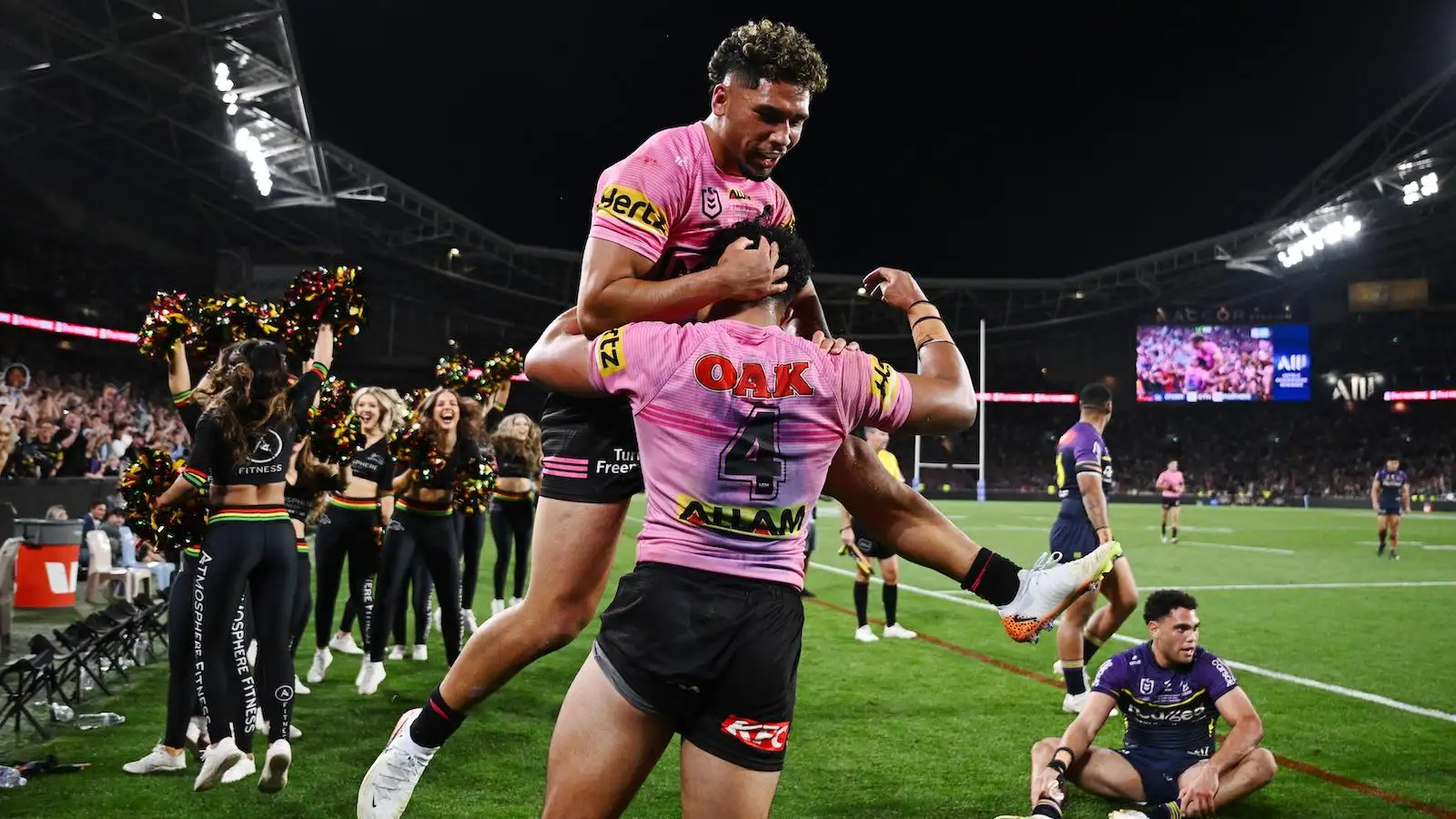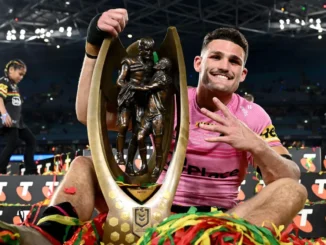
More of Conspiracy Than Coincidence: NRL Teams Tag Against Penrith Panthers

In the world of sports, especially in a highly competitive arena like the National Rugby League (NRL), narratives often emerge that pique the interest of fans, analysts, and even players. One such narrative revolves around the Penrith Panthers, a team that has dominated the NRL landscape in recent years. As their success has soared, so too have the suspicions and theories surrounding other teams’ strategies against them. Are these simply coincidences, or is there a deeper conspiracy at play?
The Rise of the Penrith Panthers
To understand the context of this discussion, we must first acknowledge the remarkable rise of the Penrith Panthers. Over the past few seasons, they have established themselves as a powerhouse in the NRL, clinching premiership titles and showcasing a roster filled with talent. Their blend of skill, athleticism, and tactical acumen has made them a formidable opponent. With players like Nathan Cleary, Jarome Luai, and Brian To’o, the Panthers have demonstrated an ability to adapt and overcome any challenge thrown their way.
However, with great success often comes scrutiny. As the Panthers continue to dominate, other NRL teams seem to adopt increasingly aggressive tactics when facing them. This has led fans and analysts alike to question whether these strategies are mere tactical choices or indicative of a larger conspiracy.
The Tagging Strategy
The term “tagging” refers to the defensive strategies employed by teams to neutralize specific players or disrupt the overall game plan of their opponents. Against the Panthers, it has become increasingly common for teams to implement a focused tagging strategy aimed at key players, particularly Nathan Cleary, their star halfback. The objective is clear: shut down the Panthers’ playmaking ability and force them into a reactive position.
While tagging is not a new concept in rugby league, the intensity and focus on the Panthers seem to have escalated. Observers have noted that teams are more willing to employ controversial tactics, including high tackles and aggressive defensive formations, specifically when playing against Penrith. This raises questions about whether these strategies are a coordinated effort across the league or simply a reaction to the Panthers’ prowess.
The Timing of Injuries and Suspensions
In a sport as physical as rugby league, injuries and suspensions are inevitable. However, the timing of certain injuries or suspensions has led to speculation about whether teams are intentionally targeting key players. Over the past couple of seasons, several high-profile injuries to Panthers players have occurred during critical matches, raising eyebrows among fans and commentators.
Take, for instance, the case of Nathan Cleary. His pivotal role in orchestrating the Panthers’ attack makes him a prime target for aggressive defensive play. There have been instances where other teams seemed to ramp up their physicality during games specifically to rattle Cleary. The question arises: are these injuries just unfortunate coincidences, or is there an underlying strategy to take out the key playmakers?
Moreover, the penalties handed out during games involving the Panthers also warrant attention. The perception that referees are more vigilant during Panthers matches could indicate an unwritten understanding among teams to play more aggressively. This perception can be disheartening for fans, leading them to believe that their team’s chance of success hinges not just on skill but also on the ability to outlast a brutal physical challenge.
Fan Reactions and Conspiracy Theories
As with any high-profile team, the Panthers have garnered their fair share of supporters and detractors. The intense rivalry that has developed between Penrith and other NRL teams has led to passionate debates among fans, many of whom believe there is more at play than simple competition.
Social media platforms have become hotbeds for conspiracy theories. Fans of rival teams often allege that other clubs are conspiring to undermine the Panthers’ success through aggressive tactics and targeted gameplay. Comments on forums and social media suggest a belief that a collective understanding exists among NRL teams to “take down the Panthers,” which only adds fuel to the fire of conspiracy theories.
This fervor is not limited to fans; players and coaches occasionally allude to the idea that there are unwritten rules and strategies when facing the Panthers. Coaches might express frustration with the officiating or the physicality of the game, hinting at a belief that the league is aware of and perhaps even tacitly condones the aggressive tactics employed against Penrith.
The Role of Media
The media plays a significant role in shaping narratives within sports. The portrayal of the Panthers as a team that is both dominant and often unfairly targeted has led to an increased focus on their games. Commentators frequently analyze tactics employed by opponents, highlighting instances of aggressive play that may border on the unethical.
This scrutiny can create a self-fulfilling prophecy, where teams feel pressure to employ harsher tactics to match the narrative that surrounds the Panthers. As media outlets continue to spotlight the Panthers’ matches, the stakes rise for opposing teams, leading to even more aggressive strategies in an attempt to claim a victory against a powerhouse.
The Psychological Aspect
The psychological dimension of this narrative cannot be overlooked. As the Panthers have become synonymous with success, the mental burden of facing them has increased for rival teams. The fear of losing to a dominant side can drive teams to adopt extreme measures, believing that they must do whatever it takes to level the playing field.
This heightened tension creates an environment where players may feel justified in employing risky and aggressive tactics. The idea of “playing for pride” can lead to decisions that blur the lines of sportsmanship, and the allure of taking down a champion can make such tactics seem more acceptable.
The League’s Response
The NRL itself has a vested interest in maintaining the integrity of the game. The league’s officials and governing bodies are aware of the growing narrative surrounding the Panthers and the potential consequences of aggressive tactics. In response, there have been initiatives aimed at promoting fair play and ensuring player safety.
However, enforcement of these initiatives can be inconsistent. Players and coaches often voice frustration about perceived bias or unequal application of rules during matches involving the Panthers. This inconsistency may inadvertently perpetuate the conspiracy theories surrounding the team, as rival teams continue to push the envelope with their tactics.
Conclusion: The Fine Line Between Competition and Conspiracy
In the realm of sports, the line between fierce competition and conspiracy can often become blurred. The Penrith Panthers, through their dominance in the NRL, have become the focal point of a narrative that involves not just gameplay but also the psychology of competition, media portrayal, and fan engagement.
While it’s easy to chalk up aggressive tactics to the heat of the moment in a competitive environment, the fact remains that the Panthers have found themselves at the center of a unique phenomenon. Whether it’s due to the desire to dethrone a champion or the inherent nature of competitive sport, the strategies employed against the Panthers warrant scrutiny and discussion.
In the end, the question remains: is it more of a conspiracy than a coincidence? While there is no definitive answer, the discourse surrounding the Panthers will undoubtedly continue, feeding into the rich tapestry of narratives that make the NRL such a captivating league. As the season unfolds, fans and analysts alike will be watching closely, eager to see how this saga develops and what new twists and turns await the Penrith Panthers on their quest for continued success.


Be the first to comment